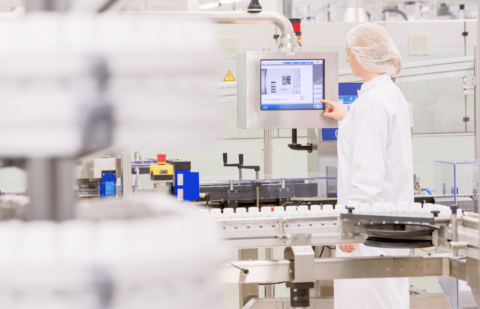In a highly regulated industry like life sciences manufacturing, the Corrective and Preventive Action (CAPA) system is a non-negotiable cornerstone of quality management. It’s designed to ensure product quality, patient safety, and regulatory compliance. However, for many organizations, CAPA has become less of a system for continuous improvement and more of a source of frustration and inefficiency. Are your teams constantly battling overdue actions, recurring deviations, and a mountain of paperwork? If so, you might be experiencing “CAPA overload” – a state where the sheer volume and reactive nature of CAPAs stifle genuine progress. This post explores this common predicament and introduces a path towards transforming your CAPA process from a reactive burden into a proactive catalyst for quality excellence.
What are the real costs of an overwhelmed CAPA system?
The symptoms of an overloaded CAPA system are all too familiar: Quality Assurance (QA) teams stretched thin, manufacturing disruptions, and a persistent feeling of “death by CAPA.” Many companies find themselves grappling with disorganized and manual processes, often relying on paper-based systems or disconnected spreadsheets. This traditional approach is not only time-consuming but also highly susceptible to human error, leading to a lack of transparency and difficulty in tracking critical actions. Indeed, a significant portion of quality professionals’ time can be consumed by administrative tasks rather than strategic problem-solving. The financial implications are also considerable. The Cost of Non-Conformance (CoNC) – encompassing scrap, rework, recalls, and lost production time – can escalate rapidly when CAPAs fail to address root causes effectively. Furthermore, regulatory bodies like the FDA frequently cite deficiencies in CAPA systems. In fact, issues related to 21 CFR 820.100 (Corrective and preventive action) consistently rank among the top observations during FDA inspections of medical device firms.
How Does a Reactive Culture Undermine CAPA Effectiveness?
A major hurdle is the often deeply ingrained reactive culture. CAPA is traditionally initiated after a problem has surfaced, sometimes after considerable impact. For example, Incomplete CAPA or Root Cause Analysis can lead to repeat deviations on same line. This “firefighting” mode means organizations are perpetually trying to catch up, rather than getting ahead of potential issues. This reactive stance is often compounded by a “checkbox mentality,” where the primary focus shifts to completing documentation to satisfy auditors, rather than achieving genuine and sustainable improvements. The fear of regulatory findings can inadvertently lead to overly burdensome processes, contributing further to CAPA overload without necessarily enhancing quality. Moreover, when CAPAs operate in isolation from other quality processes like audits, supplier management, or complaint handling, it becomes incredibly challenging to spot broader trends or systemic weaknesses. This fragmented approach prevents a holistic view of quality, meaning opportunities for comprehensive, preventive actions are missed. The result? Recurring issues, frustrated teams, and a CAPA system that feels more like a drain on resources than a driver of excellence.
Shifting Gears: Moving from a reactive to proactive CAPA system
The good news is that transformation is possible. The key lies in shifting from a manual, reactive, and fragmented CAPA process to one that is proactive, data-driven, and integrated. Imagine a system where you could anticipate potential issues before they lead to nonconformities, where data from across your manufacturing and quality landscape is harnessed to provide actionable insights, and where manual drudgery is replaced by intelligent automation. This is where modern manufacturing intelligence platforms come into play. By leveraging advancements like Artificial Intelligence (AI) and Machine Learning (ML), these platforms can digitize records, unify disparate data sources, and provide powerful analytical tools. This eventually leads to use cases like impurity detection, contamination control, etc. Instead of drowning in data, quality teams can quickly identify trends and perform more thorough root cause analyses. For example, AI-powered tools can accelerate the analysis of historical data by rapidly identifying trends and similar past events that might be missed by human investigators, significantly reducing investigation time. This shift enables a focus on genuine continuous improvement. It allows companies to move beyond simply reacting to problems towards a state of predicting and preventing them, fostering a true quality culture. Here are some examples on how Mariana’s AI powered Manufacturing Intelligence platform helps you become more proactive with your CAPA system:
- Digitization of paper-batch records not only makes your data more organized, but it also helps you support ALCOA+ principles. This means your CAPA records are more reliable, traceable, and defendable in front of inspectors.
- Digitized data can be fed into analytics dashboards so that you can spot trends across batches which may otherwise go unnoticed in paper records. This enables trend-based CAPAs, a core FDA expectation under 21 CFR 820.100.
- Mareana’s Genealogy, coupled with Neptune Chatbot, works as a digital nervous system for your pharma manufacturing. They fasten your Root Cause Analysis exponentially by providing you a real-time visual representation of your process, and a virtual co-pilot to help you understand the intricacies of all connections in it.
For a more comprehensive look at how these factors interconnect and to explore advanced strategies for building a proactive quality culture, our detailed whitepaper, Revolutionize Quality Assurance with AI, offers further insights.
Conclusion
The journey from a burdensome, reactive CAPA system to a proactive, value-driving quality engine is no longer a far-off vision. While challenges like manual processes, data silos, and a “checkbox compliance” culture are significant, the tools and strategies to overcome them are now within reach. By embracing a more intelligent, data-centric approach, life sciences manufacturers can alleviate CAPA overload, reduce the risk of non-compliance, lower operational costs, and, most importantly, enhance product quality and patient safety. It’s about transforming CAPA from a perceived roadblock into a genuine catalyst for operational excellence and continuous improvement. Ready to move beyond a reactive CAPA system? Discover how Mareana’s manufacturing intelligence platform can empower your shift to proactive, data-driven quality management. Book a demo with us now.
Frequently Asked Questions (FAQs)
1. What is a CAPA system in life sciences manufacturing?
A Corrective and Preventive Action (CAPA) system is a structured process used in life sciences manufacturing to identify, investigate, and resolve quality issues. It ensures compliance with regulations like 21 CFR 820.100, supports patient safety, and promotes continuous improvement by preventing the recurrence of deviations or non-conformances.
2. Why do many organizations experience CAPA overload?
CAPA overload often occurs when companies rely on manual, paper-based, or disconnected systems. This leads to inefficiencies, delayed actions, and reactive firefighting instead of proactive prevention. Over time, it overwhelms quality teams and reduces the system’s effectiveness in driving real improvements.
3. How can a reactive culture affect CAPA effectiveness?
A reactive quality culture treats CAPA as a box-ticking exercise rather than a strategic improvement tool. When the focus is on compliance documentation instead of root cause resolution, recurring deviations increase, investigations take longer, and opportunities for preventive action are missed.
4. What are the financial and compliance risks of a poorly managed CAPA system?
An ineffective CAPA process can lead to higher Costs of Non-Conformance (CoNC), including rework, recalls, and lost production time. Moreover, it can result in regulatory observations from agencies like the FDA, which frequently cite CAPA deficiencies as top inspection findings.
5. How can AI and data analytics improve CAPA management?
AI-powered manufacturing intelligence platforms can digitize records, unify data from multiple sources, and identify patterns that humans might overlook. This enables predictive analytics, faster root cause analysis, and trend-based CAPAs—helping manufacturers move from reactive correction to proactive prevention.
6. What are the benefits of digitizing CAPA processes?
Digitization improves data integrity and traceability, aligning with ALCOA+ principles. It enables real-time dashboards, trend detection, and easier audit readiness. Digital CAPA systems also help reduce human error, accelerate investigations, and foster a culture of continuous quality improvement.
7. How does Mareana’s AI-powered platform support proactive CAPA systems?
Mareana’s Manufacturing Intelligence platform leverages AI and ML to digitize batch records, visualize process genealogy, and support real-time analytics. With tools like the Neptune Chatbot, it accelerates root cause analysis and helps QA teams identify emerging risks before they escalate into compliance issues.
8. Why is trend-based CAPA an FDA expectation?
The FDA expects companies to analyze trends across batches and processes to identify recurring or emerging issues. Trend-based CAPA demonstrates a mature, preventive quality culture and helps organizations stay compliant while improving operational efficiency.
9. How does a proactive CAPA system enhance product quality and patient safety?
By anticipating and addressing potential issues early, proactive CAPA systems minimize deviations, reduce production disruptions, and ensure consistent product quality. This ultimately safeguards patient health and strengthens trust in the manufacturer’s commitment to excellence.
10. What steps can manufacturers take to transition from reactive to proactive CAPA systems?
To move toward a proactive CAPA approach, manufacturers should:
- Digitize and centralize quality data
- Integrate CAPA with other systems like audits and supplier management
- Leverage AI-driven insights for trend analysis
- Foster a quality culture focused on prevention rather than correction




 Learn more
Learn more



